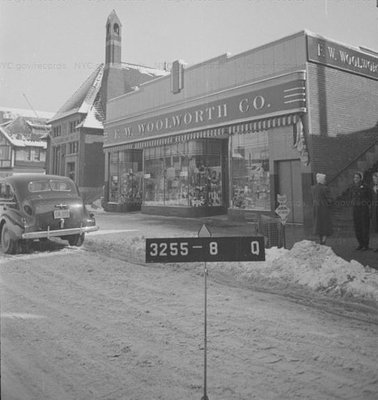Sweet memories of local soda fountains
For much of the 20th century, soda fountains were found in drugstores, candy shops, five-and-dimes, and ice cream parlors. Today, the American staple is rarely seen, but you can still get a milkshake, egg cream, or even a Lime Rickey as if it was yesterday in Forest Hills.
Thanks to the commitment of generations of the Citrano family, Eddie’s Sweet Shop on Metropolitan Avenue in Forest Hills still offers a taste of those bygone days.
Formerly Witt’s, it holds the distinction as the longest continuously operating and most intact soda fountain establishment in the city.
Pharmacist Jacob Baur launched the Liquid Carbonic Company in 1888, making it possible for any aspiring soda jerk to purchase a soda fountain. By the 1920s, it was the norm for drugstores to have a soda fountain.
When Prohibition began in 1919 and bars were shuttered, soda fountains were a go-to place for socializing.
“The soda fountain is the most valuable, most useful, most profitable, and altogether most beneficial business building feature assimilated by the drugstore in a generation,” read an article by John Somerset in a June 1920 edition of “Drug Topics.” “The bar is dead, the fountain lives, and soda is king!”
However, with the widespread availability of ice cream, the popularity of soft drinks, and the rise of fast food, soda fountains dwindled in the 1970s.
Richard Delaney lived near Sutton Hall Pharmacy on Ascan Avenue, a staple of his childhood. He praised its warm and cozy ambiance, and said the soda fountain brought people together
“When I was in grade school at Our Lady Queen of Martyrs, we got out at three and would have Cokes or sundaes.” he said. “One of the pharmacists, Mr. Drapkin, was especially a wonderful person. Once you started going, you kept returning, since the environment was so pleasant.”
Lucy Brown Karwoski could often be spotted at Woolworth’s at 63rd Drive and Queens Boulevard. She recalled ice cream cones with two scoops for a dime, and up to five scoops for a quarter.
“You could mix your flavors and get sprinkles on top,” she said. “Can you imagine a kid walking home with that many scoops?”
Justine Mastanduno is currently the manager of Kew Gardens Cinemas. She recalled shopping at Woolworth’s with her mom.
“The counter area had a distinct, sweet aroma to it, and I only smell that again when I open the cabinet at our concessions at the cinema,” she said. “I can close my eyes and breathe it in, and I’m instantly transported back to the red vinyl covered stool next to my mom at the Woolworth’s counter.”
She considers soda fountains part of a bygone era of simpler times.
“We would sit, chat, and giggle with whoever we were with, because we were 100 percent present,” Mastanduno said. “There were no phones or apps to take us out of the sweet moments.”
As a child, Joy Kurtz lived near Schattin’s on 76th Road at Queens Boulevard.
“There was nothing better than walking up the block on a warm summer’s evening to get a vanilla fudge ice cream cone with sprinkles on top.”
She pointed out that shops like Schattin’s also sold “all the important stuff,” including bubble gum and baseball cards, newspapers, comic books, and sandwiches.
“All kinds of magazines were inserted into the wooden slots which lined the wall,” Kurtz said. “I can still see the brown phone booth with a seat and a well-worn directory.”
In the early 1950s, Allan Wachtel and his family moved to the new Howard Apartments on 66th Road. He and his brother Bert often went to Randy’s Luncheonette near the former Trylon Theater.
“Randy knew everyone in the neighborhood,” Wachtel said. “Randy, who looked out for my brother and I, would delight in seeing my eyes bulge when he slid the toasted pound cake with a scoop of vanilla ice cream in front of me. It was all for 70 cents! At the end of the week, my incredible mom would settle up, as they kept a running total.”
At Croft Drugs, which was not far from Randy’s, Wachtel delivered merchandise and prescriptions to customers. At Sam’s near the 67th Avenue subway, he was a soda jerk.
“Sam taught me the art of the egg cream and making a Lime Rickey,” he said. “The action really started around 5 p.m. at rush hour. With each subway train that arrived, we would be jammed with customers wanting Lucky Strikes, Pall Malls, and Marlboros, which were big sellers at 25 cents a pack.”
Marilyn Shurka Silk recalled Sarah & Paul’s on Austin Street and 63rd Drive.
“I bought my sidewalk chalk, comic books, and Spaulding balls there,” she said. “I brought bottles that we found on the LIRR tracks for deposit money, which we used to buy candy and twin popsicles.”
Silk said it was a simple pleasure to share ice cream with loved ones and friends in Alexander’s and Jahn’s on Queens Boulevard.
“We loved The Kitchen Sink dessert at Jahn’s,” she said. “I wish that life was that simple now.”





